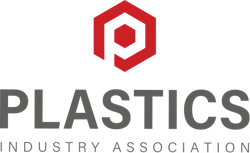PLASTICS plays key role in developing machinery standards
The Plastics Industry Association (PLASTICS) was accredited by the American National Standards Institute (ANSI) in 1986 to develop safety standards addressing both supplier and user requirements for plastics machinery in the United States. Known as the ANSI/PLASTICS B151 series of voluntary consensus American National Standards, they were developed through a proven consensus development committee process. Among the challenges of producing such standards is striking a balance between alignment with equivalent global standards while serving the best interest of the U.S. market.
Case in point
In 2020, ISO 20430 was published as the international standard for injection molding machines, presenting an opportunity for the B151.1 Technical Committee. During this time, the PLASTICS Machinery Safety Technical Committee participated directly in the development of the ISO 20430 standard and provided input through its U.S. Technical Advisory Group to ISO/TC 270 — the international technical committee for plastics and rubber machines.
The PLASTICS B151.1 Committee considered adopting the international standard with modifications, aligning the ANSI B151.1 document with ISO 20430, or revising the ANSI B151.1, to align with the new international standard. The decision would impact the safety standards for plastic processing machinery in the U.S.
After careful consideration, the committee decided to revise the ANSI B151.1 standard, finding that complete alignment with the ISO standard was not feasible due to differences in electrical requirements, normative references and user requirements. The aim of the committee will be to revise the ANSI B151.1 standard to meet the necessary safety requirements for the U.S. market while incorporating ISO 20430 where it makes sense.
Reconciling national and international standards
ISO 20430 offers requirements for personnel safety in machinery design and construction. However, specific occupational health and safety requirements for users are not included in the ISO 20430 standard, as these regulations vary across countries and regions and are subject to local authority. Instead, the manufacturer has the responsibility to provide the purchaser of the injection molding machine with "information for use" meant to ensure that the user has all the necessary information to safely use the machine.
The B151.1 Technical Committee has a different approach than ISO when it comes to setting safety standards for plastics machinery in the United States. While ISO focuses on design requirements and leaves user requirements to local regulations, the B151.1 lays out requirements for both suppliers and users of machinery, with the responsibility for reducing risks shared between the supplier and user.
The difference in the intended audience of the standards leads to different purposes that they serve in both the EU and the U.S. In the EU, the EN (European Norm) standards are utilized to ensure compliance with the EU Machinery Directive, which is aimed at machinery suppliers. In the U.S., if OSHA finds that manufacturers have not considered voluntary ANSI standards, such as ANSI/PLASTICS B151.1, then the corresponding fines may be higher, and penalties may be stricter in civil proceedings.
Reaching consensus on a goal
This updated version of B151.1 aims to align with national (ANSI), international (ISO and IEC), and European (EN) standards as much as possible, which can be challenging due to the external normative documents' references mentioned earlier. Referencing multiple documents can make it difficult for a country to adopt an international standard, since international standards tend to reference more documents than their national counterparts. For instance, ISO 20430 has 36 normative references, whereas the 2017 version of B151.1 has only nine.
That said, B151.1 differs from the ISO 20430 international standard when it comes to referencing normative documents. In particular, B151.1 will refer to ANSI standards, which can sometimes differ from their ISO counterparts. One such example concerns references to safety distance tables found in both the ANSI B11.19-2019 standard and the ISO 20430 (through a reference to ISO 13857). These tables provide values used to determine the corresponding dimension(s) of the hazard zone's height, the height of protective structures, and the horizontal safety distance to the hazard zone.
Currently, ISO 20430 references the "low-risk" table (ISO 13857, Table 1) which is meant for situations where the probability of injury is low and the severity of harm is slight. However, ANSI B11.19 takes the stance that no contact with a hazard is acceptable, regardless of the frequency or severity of harm, and refers to the table providing more conservative distances (ISO 13857, Table 2) instead. In order to provide maximum safety for workers reaching over protective structures, B151.1 will now reference ANSI B11.19. We believe that this change will help ensure the safety of individuals working in hazardous areas by choosing the appropriate safety table for the situation.
The Technical Committee of B151.1 has decided to revise the 2017 version of the standard instead of adopting ISO 20430. While ISO 20430 will be taken into consideration, certain adjustments must be made to comply with standard practices in the United States. Some provisions of ISO 20430 will be substituted with more appropriate national standards such as the ANSI B11.19, which are already in very wide use. The committee will make an effort to consider the requirements of ISO 20430, but it will recognize that unique U.S. requirements may be dictated by ANSI standards or U.S. laws.
PLASTICS strongly recommends all users of injection molding machines to ensure that they have the latest edition of this publication when it becomes available.
